Save Over 40 Hours on Conference Session Scheduling
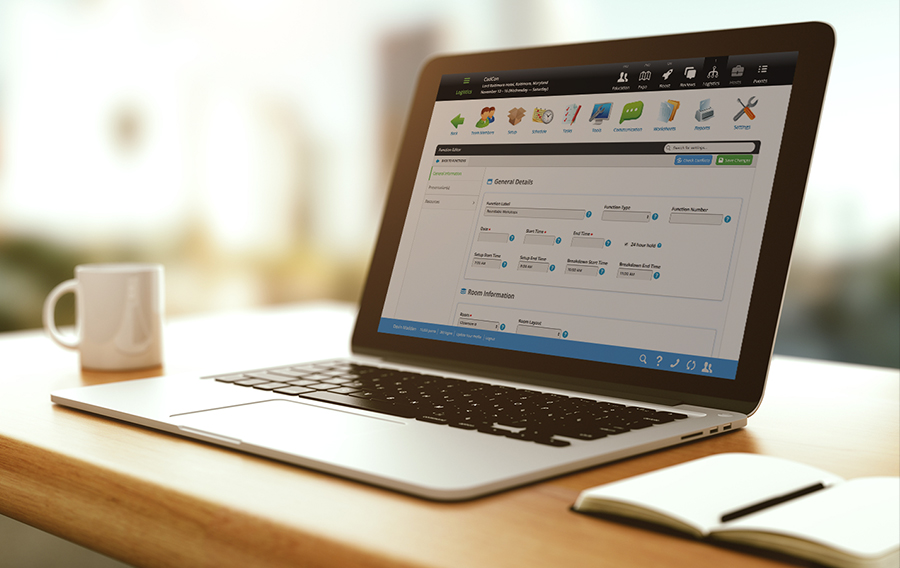
How ALA Automated Logistics Management for Their Annual Conference
The American Library Association (ALA) is the oldest and largest library association in the world. Roughly 20,000 librarians gather every year for the ALA Annual Conference. An additional 10,000 librarians gather for ALA’s Midwinter Meeting. Collectively, ALA Content Coordinator, Alicia “Alee” Navarro, and her team are responsible for scheduling and managing over 3,000 events, sessions, and presentations between these two conferences.
“It’s a tremendous amount of effort,” says Navarro. “Year after year we have to not only source the best content, but also make sure we place that content in the correct rooms.”
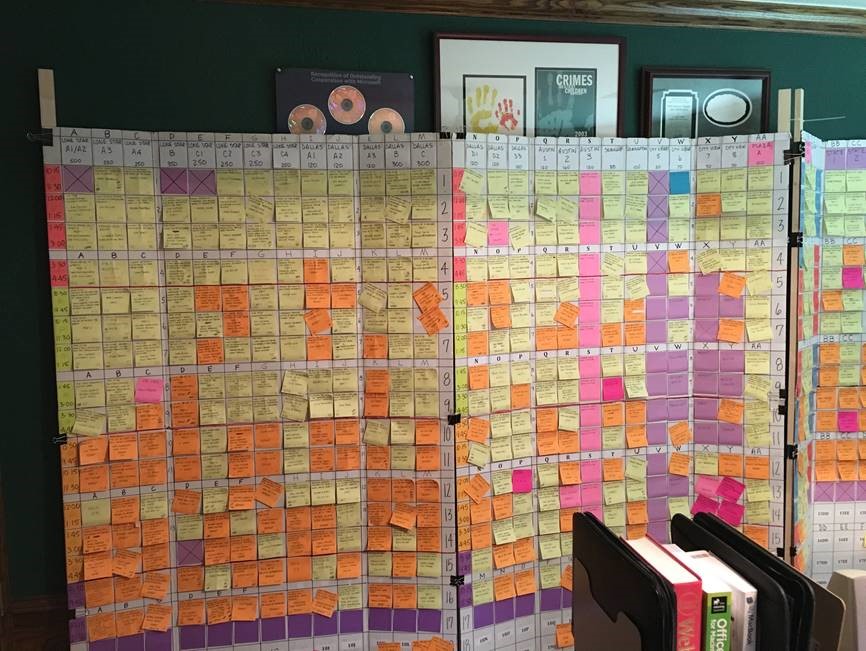
One organization’s wall of session scheduling sticky notes.
Navarro says there are many factors at play. The popularity of a speaker or topic, the technology requirements of a particular presentation, and the sheer volume of sessions that need to be scheduled give rise to conflicts in scheduling.
What needed to be done to automate conference room scheduling and logistics planning?
Enter CadmiumCD. The event management software company has been working with ALA since 2013, providing everything from abstract management to event apps and websites. When Navarro approached CadmiumCD co-founder and CTO, Peter Wyatt, about resolving her team’s scheduling woes, his team was up for the challenge.
“It’s a problem that many organizations we work with have been talking about,” says Wyatt. “We were certain we could come up with a solution.”
Together with ALA, CadmiumCD identified three main problems that needed to be solved, and their corresponding needs.
Need #1: Searchable Rooms
An easy way to search for open rooms with the exact capacity, AV equipment, and other available resources necessary for a particular session.
Need #2: Searchable Resources
A way to search for people and room conflicts, so that if for example Joe Smith were scheduled in Room 224 at 11:30am, he would not also be scheduled in Room 336 at that same time.
Need #3: Onsite Data Mobility
A way to access this information onsite without a laptop in a mobile friendly manner.
What did ALA do to resolve their conference scheduling woes?
The first two problems were resolved with what has become CadmiumCD’s Conference Harvester Logistics Module, which allows meeting organizers like Navarro to build a list of available resources, assign those resources to specific rooms in a convention center, and automatically schedule sessions into open rooms.
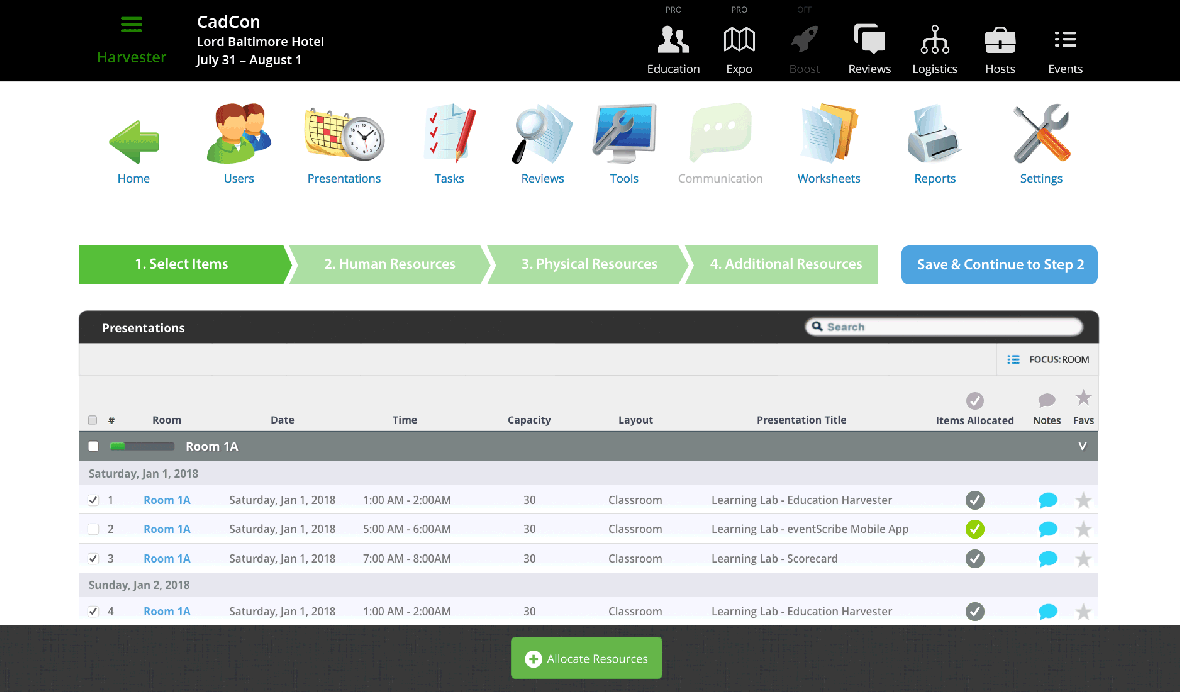
Conference Harvester Logistics automates the allocation of resources into session rooms.
Its goal is to reduce the time organizers of large educational conferences with multiple concurrent session tracks spend allocating resources and scheduling sessions. It assists organizers in identifying schedule conflicts, available rooms with the right AV setup for a specific session, and much more.
Here’s how it works:
- First, a meeting organizer defines a venue and the rooms available in that venue. Each room has data associated with it such as room capacity, minimum and maximum expected attendance, and more.
- Next, a meeting organizer defines the resources that are available to her and her team. These might include human resources such as staff members and volunteers, physical resources such as AV items, and any additional resources that may be necessary for a successful room set up such as drinks and snacks.
- Available days and time slots are also added to the system, to which rooms can later be assigned.
- Then, the meeting organizer assigns which resources are available to which room via a step-by-step process to allocate the resources properly.
- Finally, the meeting organizer can schedule individual sessions to rooms via an automated process. Essentially an algorithm runs that checks which rooms with the required resources for that specific session are available. It then detects conflicts with other sessions, and ultimately allows the meeting organizer to choose and schedule the session in the best room possible.
The third problem ALA faced was solved by an integration of the Logistics Module with CadmiumCD’s eventScribe App Boost Module. eventScribe Boost is a revolutionary piece of the meeting planning puzzle because it allows planners to manage all their content, data, and stakeholders in real-time, right from the same app their attendees are using for the first time ever.
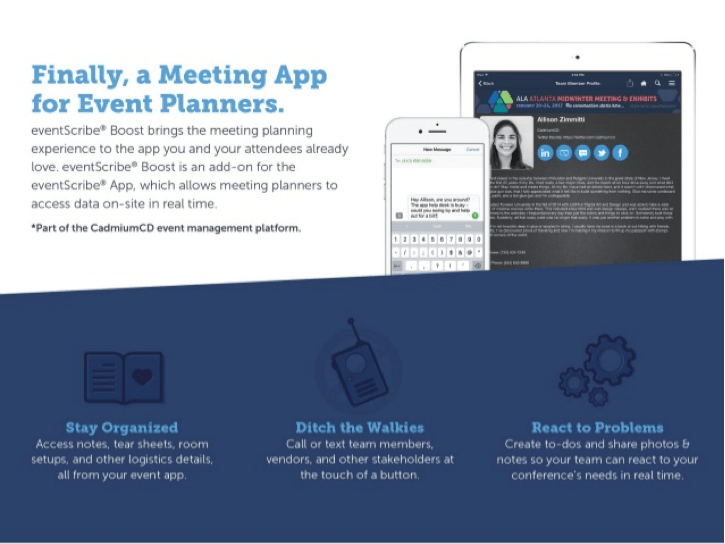
eventScribe Boost is an event app add-on with special features for meeting planners and their stakeholders.
When integrated with Logistics, Boost allows meeting planners to access tear-sheets for each individual room and see what resources are allocated to particular sessions all from their mobile device.
When will Conference Harvester Logistics be available to me?
ALA, along with other major organizations like ADA, WVC, MLA, and AAAnthro, have been in the process of Beta Testing the Logistics Module for the past year and a half so that it is ready for use by all meeting organizers in 2019. One organization calculated over 40 hours of labor saved after using the system.
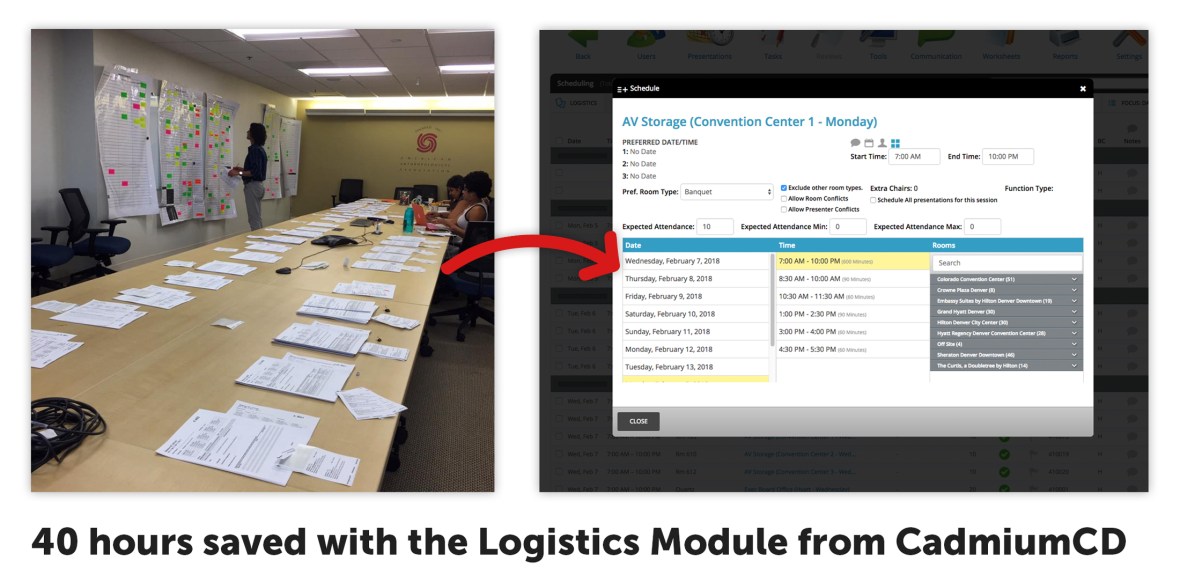
CadmiumCD has taken such care in creating this system that it hired an independent organization in late 2017 to conduct industry research on the functionality organizers need most in software like this.
“We take pride in bringing products to market that are based on real-world needs,” says Wyatt. “It’s about investing in the industry and working with our client-partners to develop solutions that will redefine how they manage their events.”
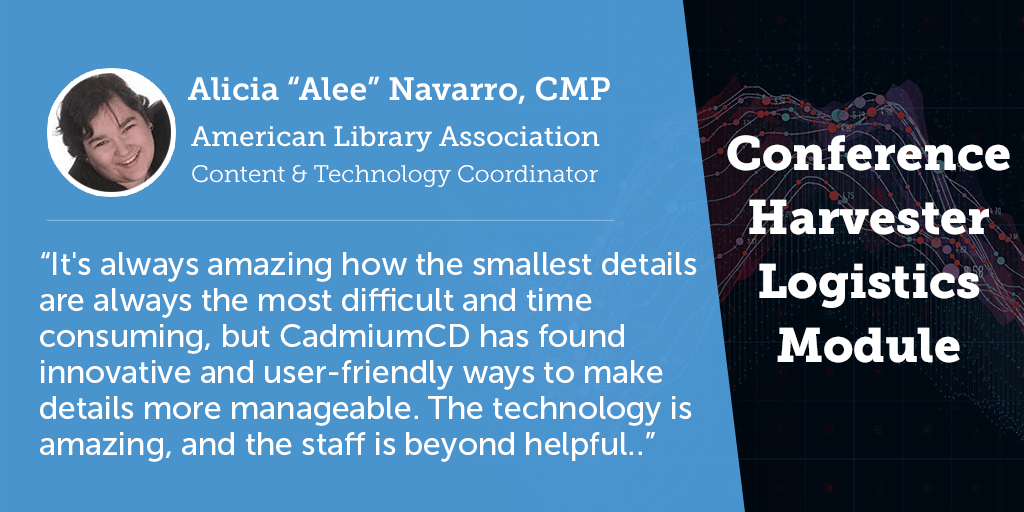
The Conference Harvester Logistics module will be available to all meeting planners starting early 2019. Join the waitlist to be notified when it is available for your conferences.